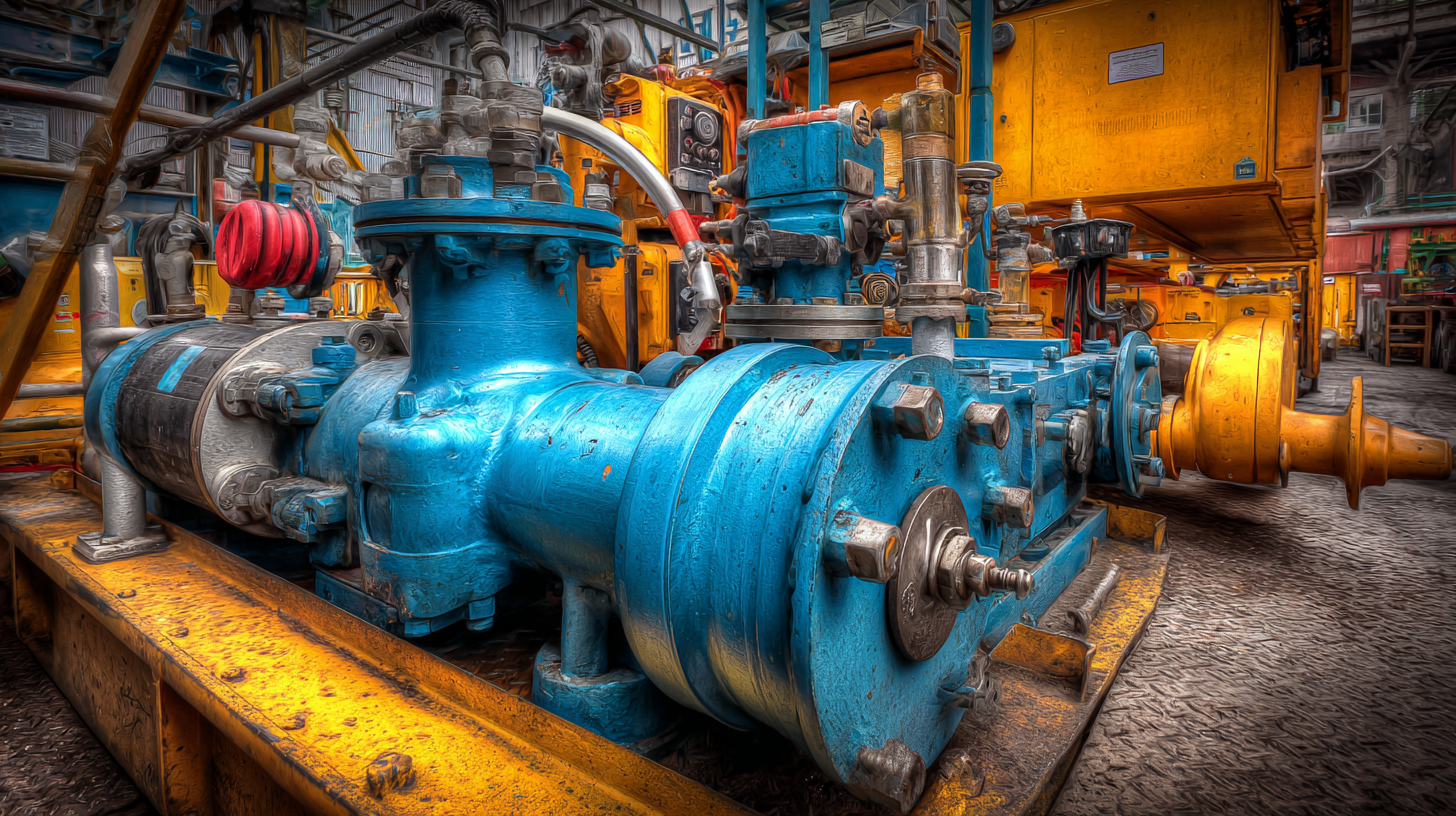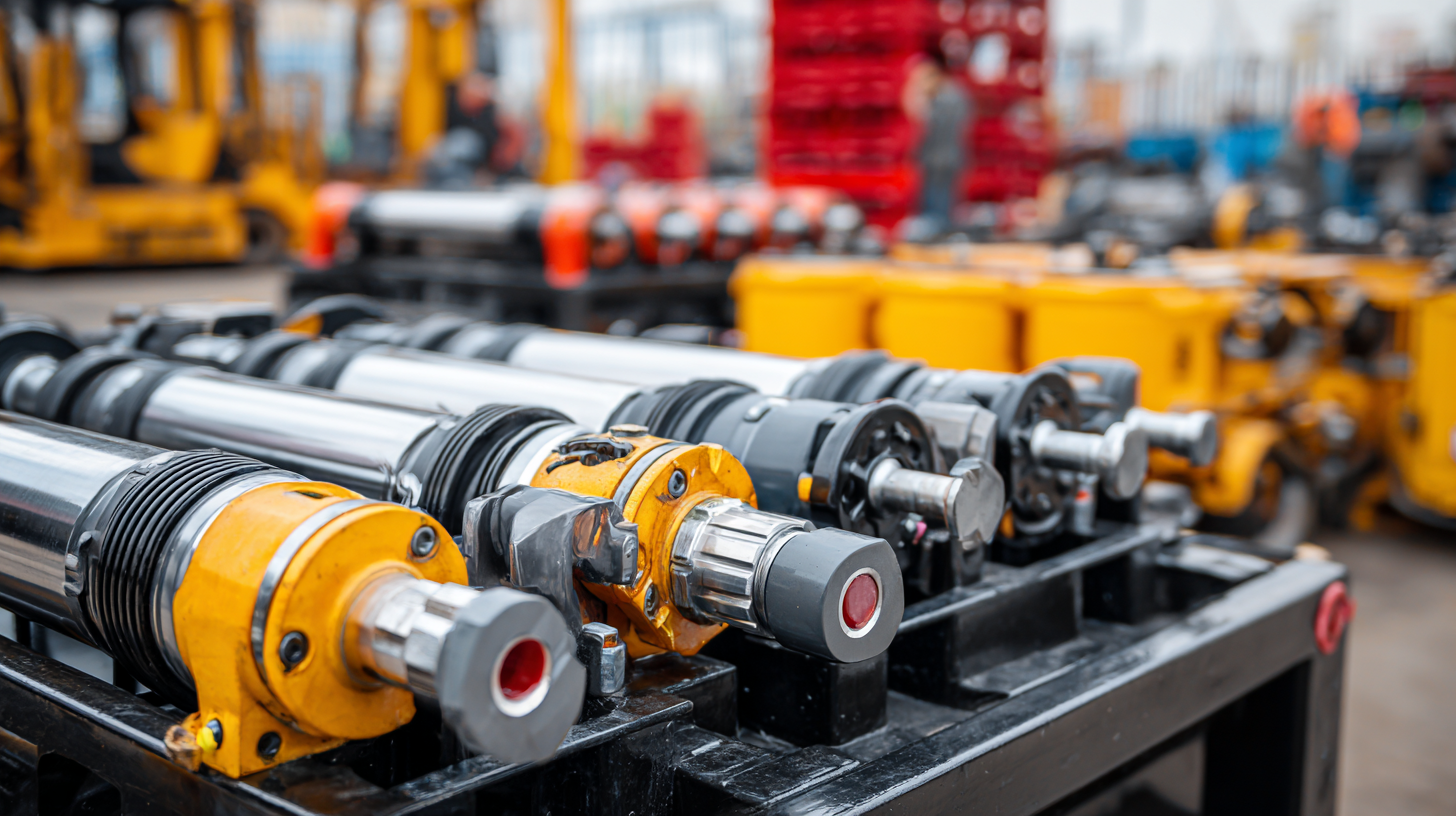Essential Checklist for Sourcing the Best Hydraulic Equipment Globally
In today's competitive market, sourcing the best hydraulic equipment globally has become a critical task for industry professionals. According to a report by Research and Markets, the global hydraulic equipment market is expected to reach approximately $57 billion by 2025, driven by the increasing demand for construction and mining machinery. This growth highlights the necessity for businesses to adopt a strategic approach to sourcing hydraulic equipment that not only meets quality standards but also ensures cost-effectiveness and reliability.

Essential considerations include evaluating supplier credentials, understanding technological advancements, and navigating international regulations. By employing a well-structured checklist and leveraging industry insights, procurement teams can enhance their decision-making process and secure the best hydraulic equipment to boost operational efficiency and drive profitability.
Identifying Key Criteria for Quality Hydraulic Equipment Manufacturers
When sourcing hydraulic equipment globally, identifying key criteria for quality manufacturers is critical to ensuring optimal performance and longevity in your operations.
First and foremost, assess the manufacturer's experience and reputation in the industry. Established companies with a history of reliable product offerings often have strong logistics, technical support, and customer service that can make or break your investment.
In addition to experience, evaluate the technology and processes utilized in production. Look for manufacturers that adopt modern techniques and machinery to maintain high levels of precision and efficiency. Certifications such as ISO 9001 can also be an indicator of a manufacturer's commitment to quality and continuous improvement. Finally, consider the availability of after-sales support and spare parts, as this can significantly impact maintenance and downtime for your hydraulic systems. By focusing on these criteria, you can make informed decisions that align with your operational needs and drive long-term success.
Researching Global Suppliers: Where to Find Reliable Sources
When sourcing hydraulic equipment globally, identifying reliable suppliers is paramount. A recent market report from Research and Markets indicates that the global hydraulic equipment market is projected to grow from $36.5 billion in 2023 to $50.5 billion by 2030, with a compound annual growth rate (CAGR) of 4.6%. This rising demand necessitates thorough research into potential suppliers to ensure they meet industry standards and quality requirements.
To find trustworthy sources, start by exploring online platforms specific to industrial equipment, such as ThomasNet or Alibaba. These platforms feature verified suppliers and customer reviews, which can provide insight into their reputation. Additionally, attending global trade shows, such as BAUMA or The International Fluid Power Exposition (IFPE), allows for direct interaction with manufacturers. According to a survey by the Association for Manufacturing Technology, 70% of attendees at these events confirmed they established valuable supplier connections, highlighting the importance of face-to-face networking in the hydraulic equipment industry.
Essential Checklist for Sourcing the Best Hydraulic Equipment Globally
| Criteria | Key Considerations | Notes |
|---|---|---|
| Supplier Reputation | Check for certifications, reviews, and testimonials. | Research industry-related forums. |
| Product Quality | Review product specifications and quality standards. | Request samples if necessary. |
| Pricing Structure | Compare prices with competitors. | Be wary of prices that seem too low. |
| Technology & Innovation | Assess the technology used in products. | Look for companies that invest in R&D. |
| Customer Support | Evaluate the support offered post-purchase. | Check for warranty and repair services. |
| Shipping & Logistics | Understand shipping options and delivery times. | Confirm shipping costs upfront. |
| Compliance & Regulations | Ensure suppliers meet local and international regulations. | Request proof of compliance certifications. |
| Sustainability Practices | Inquire about environmentally-friendly practices. | Check for sustainability certifications. |
Evaluating Manufacturer Credentials and Certifications for Hydraulic Equipment
When sourcing hydraulic equipment on a global scale, evaluating the credentials and certifications of manufacturers is paramount. A reputable manufacturer should provide clear evidence of compliance with international standards, such as ISO 9001 for quality management systems or ISO 14001 for environmental management. These certifications demonstrate a commitment to maintaining high-quality production processes and a dedication to environmental sustainability, which can significantly influence the reliability and efficiency of the hydraulic equipment.
Additionally, it is crucial to investigate the manufacturer’s industry experience and track record. Companies that have been in the business for several years and have a portfolio of successful projects are likely to better understand the complexities involved in producing hydraulic equipment. Checking customer reviews, case studies, and partnerships with well-known brands can offer insights into their reliability and product performance. This due diligence solidifies the foundation for choosing the right supplier and ensures that the hydraulic equipment sourced meets the necessary safety and operational standards.

Understanding Material Quality and Technology Used in Production
When sourcing hydraulic equipment, understanding the material quality and technology used in production is crucial. High-quality materials not only enhance the performance and durability of hydraulic systems but also ensure safety and compliance with industry standards. According to a report by MarketsandMarkets, the global hydraulic equipment market is projected to reach $52.73 billion by 2025, driven by innovations in material science and manufacturing technology. The use of advanced materials such as high-strength steel and aluminum alloys has been on the rise, enabling manufacturers to produce lighter yet more robust hydraulic components.
Moreover, technology plays a vital role in enhancing the production processes of hydraulic equipment. The adoption of computer numerical control (CNC) machining and additive manufacturing has revolutionized how components are crafted, allowing for greater precision and reduced waste. A study by Research and Markets reveals that the integration of IoT in hydraulic systems is expected to boost operational efficiency by up to 25% by 2024, thus highlighting the importance of investing in cutting-edge technology. Companies should prioritize suppliers that emphasize both material quality and technological advancements in their manufacturing processes to secure the best hydraulic equipment globally.

Establishing Strong Communication and Support with Suppliers
Establishing robust communication and support with suppliers is crucial when sourcing hydraulic equipment globally. Clear and consistent communication helps bridge the potential gaps between expectations and deliveries. Engaging in regular discussions with suppliers not only clarifies details regarding product specifications and lead times but also fosters a relationship built on trust and transparency. Utilizing multiple channels such as emails, video calls, and face-to-face meetings can enhance understanding and ensure that all parties are on the same page.
Moreover, providing feedback is an essential component of this communication process. Suppliers appreciate constructive criticism as it helps them improve their offerings and services. By actively sharing insights about performance, delivery, and quality, businesses can cultivate a more responsive and agile supply chain. Additionally, leveraging technology can streamline communication processes. Tools like project management apps and collaborative platforms enable real-time updates and discussions, reducing the chances of miscommunication and delays. Establishing this framework not only improves sourcing efficiency but also positions businesses to be more adaptable to changes in the global market.
Essential Checklist for Sourcing Hydraulic Equipment
This bar chart illustrates the importance of key factors when sourcing hydraulic equipment globally. The data reflects the priority assigned by industry professionals to various sourcing criteria.


